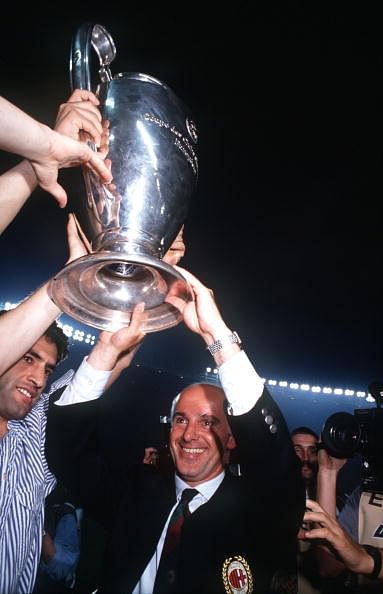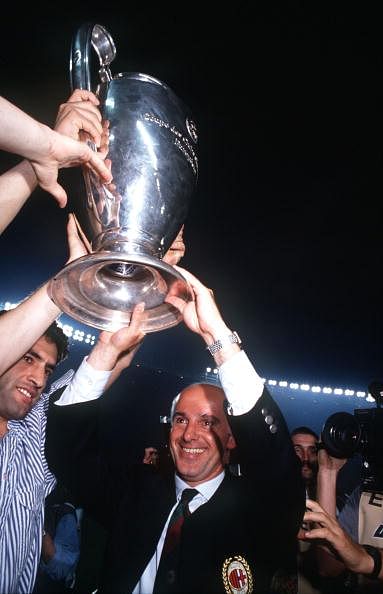
Why all Barcelona fans should be grateful to the great Arrigo Sacchi
“When I started, most of the attention was on the defensive phase.
“We had a sweeper and man-markers. The attacking phase came down to intelligence and common sense of the individual and the creativity of the No. 10.
“Italy had a defensive culture, not just in football. For centuries, everybody invaded us.”
(Inverting the Pyramid by Jonathan Wilson)
Italy – the cradle of defensive football, the birthplace of the Catenaccio, the land of Helenio Herrara and of some of the greatest defenders to have graced the game of football, namely Maldini, Cannavaro , Gentile and Baresi.
Perhaps eternally associated with the so-called “boring” brand of football, Italian football’s philosophy was almost always the same – let your opponents have the ball, let your team sit back tight and defend, and try to break at a blistering pace during a counter attack.
The role of the traditional Libero was greatly stressed upon, and one was likely to see a dull game without any free flowing or fluid movements of players, both on and off the ball. That was the Italian game; it could never shake off the label of being too “defensive” due to the Catenaccio approach to football. Well, back then, anyway.
In 1987, a former shoe-salesman brought with him an entire new philosophy of play unknown to previous Italian teams.
Arrigo Sacchi killed the libero.
The Italian maestro led a one-man revolution against defensive football when he was appointed manager of AC Milan in 1987, and although it didn’t catch on, his name certainly did. His pressing game brought success not only to his AC Milan side of the 90s, but it has also revolutionised the way every team defends without the ball.
He achieved the rare feat of retaining the European Cup, and also claimed one Scudetto and one Coppa Italia during his four years in charge.
Tactics and Total Football employed by Sacchi
Sacchi arrived at Milan as a nobody, even though he had the-then Milan president Silvio Berlusconi’s full support. He had to take up a massive job at a massive club, he had to ensure that his players would adapt to his unique training methods and also, he had to satisfy the fans with trophies.
So when it came to light that Sacchi was obsessed about creating a team that would employ attacking football, at a time when almost the entire Italy was obsessed with the Cataneccio, it was deemed quite odd.
In spite of all this attention, Sacchi’s philosophy was essentially simple, yet highly effective at the same time. He demanded his players to squeeze the game right at the centre of the park, and ensure that the distance between his defensive and forward lines was never more than 25 metres. Sacchi played with high intensity and a very high defensive line.
He liked his team to fundamentally use a zonal-marking system. Setting up in a simple 4-4-2 formation, he forced his opponents to go out wide, and when the ball was in the opposition half, his defensive line was nearly at the centre line.
He reasoned that by squeezing the pitch, in order for his opponent to get through his side, they’d need to break down three lines of players in quick succession. Not many managed it.
This system caused havoc on the pitch. It ensured that the midfielders and strikers could shift high up on the pitch, which created pressure on the opposite team, because there was hardly any space available to them. This would either lead to the ball being kicked up the field, or the player hesitating and being dispossessed.
